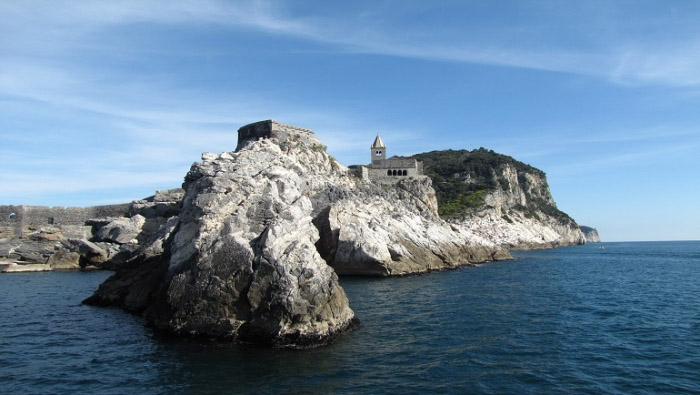The Gulf of Poets: a blend of art, history, and sea
Portovenere is undoubtedly one of the most beautiful destinations that Liguria has to offer. Since 1997, it has been designated a UNESCO World Heritage Site along with the islands of Palmaria, Tino, Tinetto, and the Cinque Terre.
Perhaps part of its charm is due to a somewhat “geographical” misunderstanding, where tourists, increasingly accustomed to moving from one destination to another based on a name or an image, do not initially grasp the grandeur of the place. So, the tourists who crowd onto the boat departing from the waterfront of La Spezia are initially “merely” fascinated by the presence of the arsenal, a few luxurious yachts in Porto Mirabello, and the views toward Montemarcello or the Apuan Alps—pleasant views, but they don’t fully do justice to the appellation “Gulf of Poets.”
Only when the boat passes Punta della Castagna, and the first glances, initially distracted by Palmaria and the curious Scola Tower, start to be captivated by the view of the fortified village, does the euphoria begin. When facing the row of colourful houses, passengers on the outside deck of the boat are in total amazement. Even the most seasoned travellers, those who have visited deserts, major metropolises on different continents, and the wild areas of the world, stand up and reach for their cameras. It’s hard not to startle, be moved, or be amazed!
The same feeling is experienced by tourists who arrive by boat from the Cinque Terre when the boat rounds the Promontory of Arpaia, where the sight of the Church of San Pietro has already caught their attention.
The village of Portovenere, mentioned by Antoninus Pius in 131 AD as “Porto Veneris,” has ancient origins. Its history is closely tied to its strategic location and its connection with the Republic of Genoa, to which the village belonged since 1113.
In addition to the picturesque seafront, worth visiting are the Church of San Pietro, built in its present structure in 1277 but erected on the remains of a pagan temple, the parish of San Lorenzo, which combines Gothic and Renaissance elements with early Romanesque forms, the Doria Castle, an imposing military architecture, and the Byron’s Grotto, which can be reached with a short detour from Piazza Spallanzani.
The name “Gulf of Poets” is due to the frequent visits of famous poets and writers such as David Herbert Lawrence, Lord Byron, and Percy Shelley.




